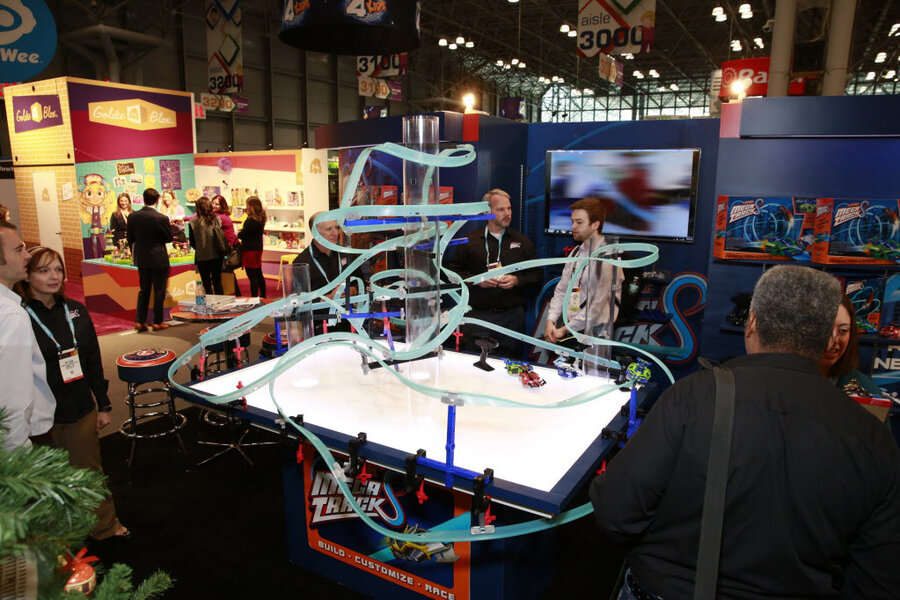Tech is in the air at New York annual toy fair
Loading...
The "Internet of things" seemed to take over American childhood this weekend as more than 1,000 toy industry reps descended on New York's 113th annual Toy Fair, displaying thousands of high-tech and collectible toys in a 422,000 square foot, kid-free space, with "traditional" toys making a brave stand for nostalgia's sake.
"Drones, Robots, and Toys-to-Life" and "STEAM" (Science, Technology, Engineering, Arts, and Math) were two of the top five trends identified by the Toy Industry Association (TIA), which holds the annual fair at the Jacob K. Javits Convention Center.
New products' main users, the under-18 set, are banned from the February 13-16 event, where toy producers try to catch the eyes of retail reps. TIA's members make up about 90 percent of the country's $22 billion toy industry, according to its website.
Toys that emphasize adults and kids playing side by side will be big this year, the TIA wrote in a press release, and some of the toys wouldn't have looked out of place in a grown-up's stocking this year: drones, for instance. Up to 1 million were expected to be sold during the 2015 holiday season.
Many high-tech toys were marketed with education in mind, such as robots that the TIA claims will "be customizable and teach kids important concepts, including coding, engineering, problem-solving and building." The so-called Toys-to-Life trend is essentially traditional toys enhanced to the hilt with tech, or as the press release calls it, "a 360-degree interactive play experience," from a $100, app-installed rubber duck named Edwin, to toddler tablets, to a 3-D printer, Mattel's "ThingMaker."
Even Barbie has jumped aboard. Earlier this year, Mattel issued an interactive "Hello Barbie" doll, who uses Wi-fi to customize chats with children, and the Toy Fair revealed a $299 Dreamhouse whose little owners can program Barbie's home for "party mode" (cue flashing lights) or turn on the shower if told "Get ready for school."
Traditional arts, crafts, and games also made a strong showing, which the TIA credited to Millennial parents' longing for "unplugged" days, although it noted that a growing number of old-fashioned toys had also incorporated 21st century technology. As usual, collectible items were also a popular (and lucrative) strategy, including a seemingly inordinate number of ponies, such as the film-based "Equestria Girls," who can "spontaneously sprout ears and tails through the power of friendship," in the words of reviewer Mike Fahey.
Film-based toys from Star Wars also made their big debut. A mini-droid with an "adaptive personality" from "The Force Awakens" will sell for $149, and figurines from the franchise's upcoming "Freemaker Adventurer" TV series will go on sale as well.
Lego also showed off a number of Star Wars toys, and although the blocks themselves may be old-school, many of their themes were not: the popular cell phone came "Angry Birds," for instance. But the company "kept things firmly in the safe and family friendly play zone," Forbes reported, unlike several video-game inspired sets from Lego competitors Mega Bloks.






